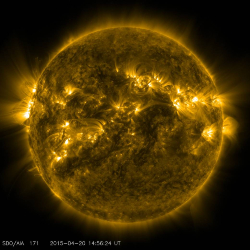
A dwarf planet of high interest has a new Hawaiian name, thanks to the work of 30 Hawaiian immersion school kumu (teachers). ʻImiloa Astronomy Center announced the name for Leleakūhonua (previously cataloged as 2015 TG387), which was discovered by the Subaru Telescope atop Maunakea and has the largest orbit of any dwarf planet or trans-neptunian object in our solar system.
Leleakūhonua references a life form mentioned in the Hawaiian creation chant, the Kumulipo. The name compares the dwarf planet’s orbit to the flight of migratory birds, and evokes a yearning to be near the Earth. This is the sixth world-renowned astronomical discovery named by the ʻImiloa program, A Hua He Inoa. The Hawaiian naming program partners with the University of Hawaiʻi at Hilo Ka Haka ʻUla O Keʻelikōlani College of Hawaiian Language. In July 2020, Hawaiian immersion kumu recruited by A Hua He Inoa through an inservice teacher development program named two celestial discoveries; dwarf planet Leleakūhonua and massive quasar Pōniuāʻena.

“It is so important that we continue on this path of refocusing science and discovery within our Hawaiian culture,” said ʻImiloa Executive Director Kaʻiu Kimura. “The worldview and linguistic competence of these Hawaiian immersion school teachers came to the fore with the creation of these names that are critical for our understanding of these types of cosmic discoveries. Facilitating positive collaboration between Hawaiʻi-based science experts and Hawaiian language experts through projects like A Hua He Inoa is what ʻImiloa is all about and we look forward to continuing to forge this path, together for years to come.”
During the naming process, kumu learned creation stories from different cultures and created related curriculum. “Ua nui ko mākou ʻiʻini e hoʻopili i ke ʻano o ke kiʻinahana a nā kūpuna ma ka noʻonoʻo, ke kālailai, a me ke kilo ʻana i ke ʻano o ia mau mea e like me ka nui i hiki (We were eager to apply, as closely as possible, the way that our forebears approached thinking, studying, observing and naming these kinds of objects in nature),” explained Kumu Kauʻi Kaina, one of the participants in the program.
Astronomers are especially interested in Leleakūhonua’s immense orbit. It takes 32,000 years for the object to complete one full orbit around the Sun. It was first discovered in 2015 and will make its closest approach to the Sun in 2078. The enormous, inclined and elliptical orbit further suggests the existence of a 9th planet (Planet X) in the outer solar system which astronomers in Hawaiʻi and around the world have been hunting for.
In summer 2020, the name Leleakūhonua was submitted to the International Astronomical Union and approved as the object’s official, internationally recognized name. A Hua He Inoa has named other Hawaiʻi-based discoveries ʻOumuamua, Kamoʻoalewa and Kaʻepaokaʻāwela, and the black hole, Pōwehi.

